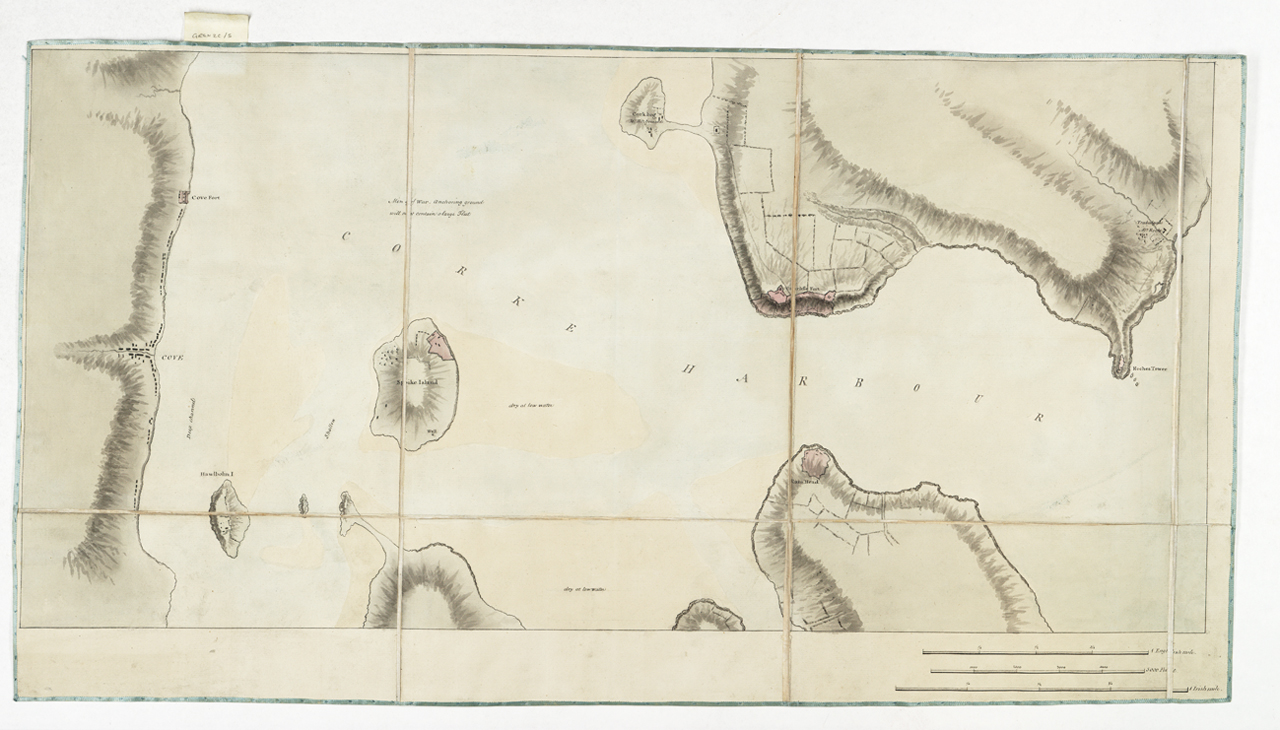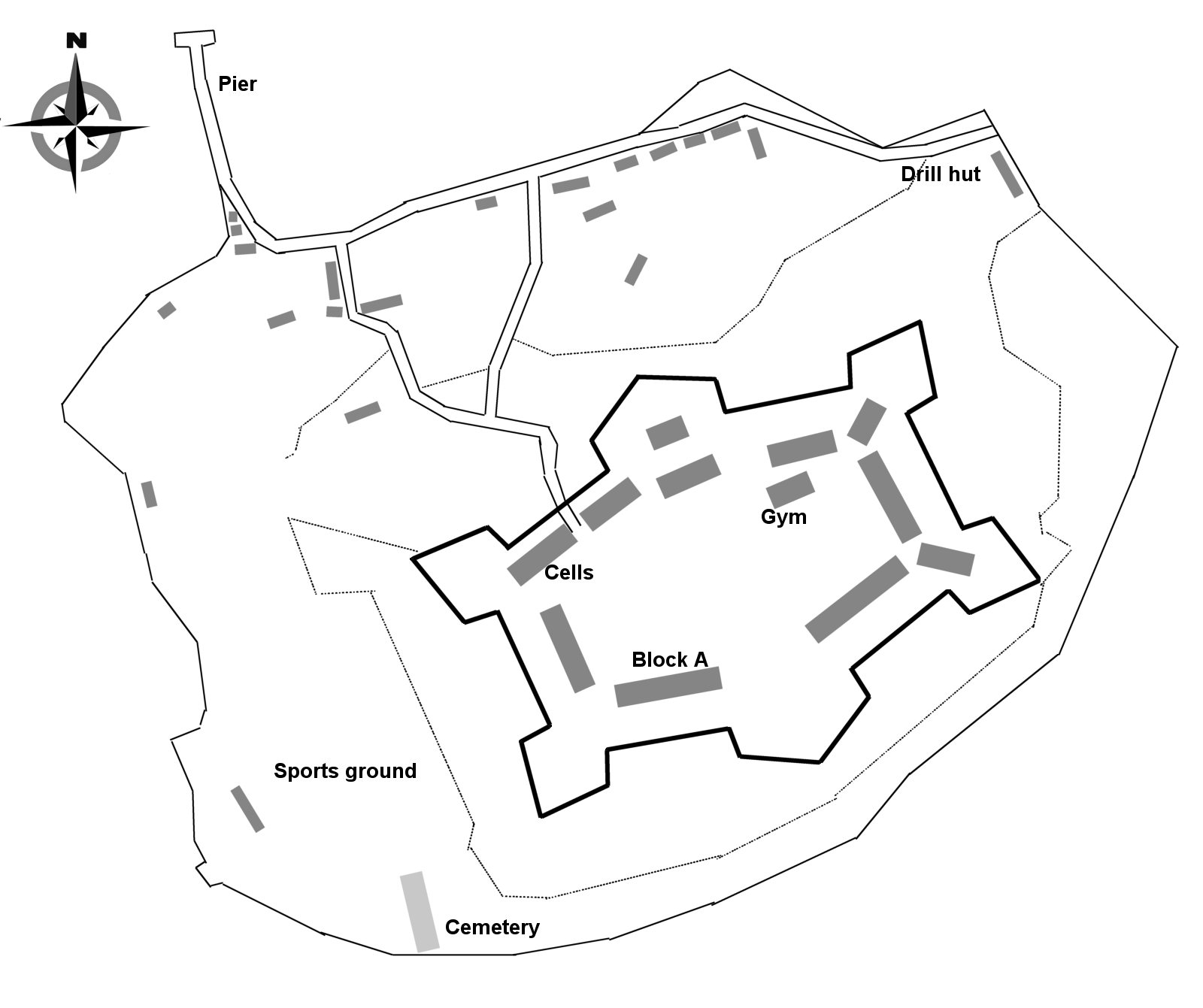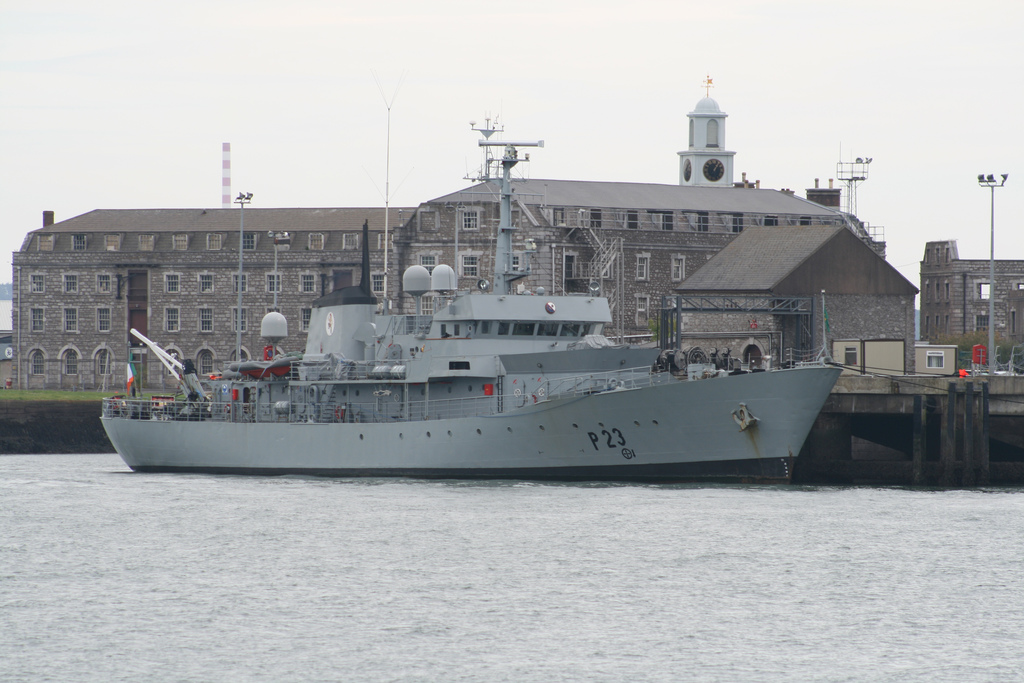|
Cobh
Cobh ( ,), known from 1849 until 1920 as Queenstown, is a seaport town on the south coast of County Cork, Republic of Ireland, Ireland. With a population of 14,148 inhabitants at the 2022 census of Ireland, 2022 census, Cobh is on the south side of Great Island in Cork Harbour and home to Ireland's only dedicated Passenger terminal (maritime), cruise terminal. Tourism in the area draws on the maritime and emigration legacy of the town. Facing the town are Spike Island, County Cork, Spike and Haulbowline islands. On a high point in the town stands St Colman's Cathedral, Cobh, St Colman's, the cathedral church of the Roman Catholic Diocese of Cloyne. It is one of the list of tallest structures in Ireland, tallest buildings in Ireland, standing at 91.4 metres (300 ft). Name The village on Great Island was known as "Ballyvoloon", a transliteration of the Irish ''Baile Ui-Mhaoileoin'' (English: "O'Malone's town"), while the Royal Navy port, established in the 1750s, became kno ... [...More Info...] [...Related Items...] OR: [Wikipedia] [Google] [Baidu] [Amazon] |
Great Island
Great Island () is an island in Cork Harbour, at the mouth of the River Lee and close to the city of Cork, Ireland. The largest town on the island is Cobh (called Queenstown from 1849 to 1920). The island's economic and social history has historically been linked to the naval, ship-building, and shipping activities in the town's environs. In the early 21st century, a different marine industry has arisen. Tourism and related services have become a significant part of the local economy, including cruise ships attracted by the Port of Cork berthing facilities on the island. This is the only dedicated cruising ship berth in the Republic of Ireland. The island has an area of , making it Ireland's second-largest after Achill Island, Achill. History The ancient name of the island was ''Ard-Neimheadh'', the "High (or important) island of Neimheadh". According to the 11th-century work Lebor Gabála Érenn, Nemed, Neimheadh was the leader of a group who invaded the area in Prehistori ... [...More Info...] [...Related Items...] OR: [Wikipedia] [Google] [Baidu] [Amazon] |
St Colman's Cathedral, Cobh
The Cathedral Church of St. Colman (), usually known as Cobh Cathedral, or previously Queenstown Cathedral, is a single-spire cathedral in Cobh, Ireland. It is a Catholic Church, Roman Catholic cathedral and was completed in 1919. Built on Cathedral Place, it overlooks Cork harbour from a prominent position, and is dedicated to Colmán of Cloyne, patron saint of the Roman Catholic Diocese of Cloyne, Diocese of Cloyne. It serves as the cathedral church of the diocese. Construction began in 1868 and was not completed until over half a century later due to increases in costs and revisions of the original plans. With the steeple being 91.4 metres tall (300 ft), the cathedral is the tallest List of tallest structures in Ireland, church in Ireland. It was considered to be the second-tallest, behind St John's Cathedral (Limerick), St John's Cathedral in Limerick which was believed to be 94 metres tall; newer measurements have shown that the St John's spire is in fact 81 metres tall ... [...More Info...] [...Related Items...] OR: [Wikipedia] [Google] [Baidu] [Amazon] |
Cork East (Dáil Constituency)
Cork East is a parliamentary constituency in County Cork represented in Dáil Éireann, the lower house of the Irish parliament or Oireachtas. The constituency elects four deputies ( Teachtaí Dála, commonly known as TDs) on the system of proportional representation by means of the single transferable vote (PR-STV). History and boundaries The constituency was first created in 1923 under the Electoral Act 1923 as a four-seat constituency and was first used for the 1923 general election. It was abolished under the Electoral (Revision of Constituencies) Act 1935. It was recreated under the Electoral (Amendment) Act 1947 as a 3-seat constituency and used for the 1948 general election until it was abolished under the Electoral (Amendment) Act 1961. It was recreated under the Electoral (Amendment) Act 1980 as a 4-seat constituency for the 1981 general election, and has been used at all elections since then. The constituency runs from Mitchelstown in the north of County Cork ... [...More Info...] [...Related Items...] OR: [Wikipedia] [Google] [Baidu] [Amazon] |
Cork Harbour
Cork Harbour () is a natural harbour and river estuary at the mouth of the River Lee (Ireland), River Lee in County Cork, Ireland. It is one of several which lay claim to the title of "second largest natural harbour in the world by navigational area" (after Port Jackson, Sydney). Other contenders include Halifax Harbour in Canada, Trincomalee Harbour in Sri Lanka and Poole Harbour in England. The harbour has been a working port and a strategic defensive hub for centuries, and it has been one of Ireland's major employment hubs since the early 1900s. Traditional heavy industries have waned since the late 20th century, with the likes of the closure of Irish Steel in Haulbowline and shipbuilding at Verolme Cork Dockyard, Verolme. It still has strategic significance in energy generation, shipping, refining and pharmaceuticals development. Geography The main tributary to the harbour is the River Lee which, after flowing through Cork (city), Cork city, passes through the upper harbour ... [...More Info...] [...Related Items...] OR: [Wikipedia] [Google] [Baidu] [Amazon] |
Roman Catholic Diocese Of Cloyne
The Diocese of Cloyne () is a Latin diocese of the Catholic Church in Ireland. It is one of six suffragan dioceses in the ecclesiastical province of Cashel (also known as Munster). History The diocese has its beginnings in the monastic settlement of Colman of Cloyne in Cloyne, east Cork. A round tower and pre-reformation cathedral still stand at this site. The diocese was erected in 580. Colman, son of Lenin, lived from 522 to 604. He had been a poet and bard at the court of Caomh, King of Munster at Cashel. It was Brendan of Clonfert who induced Colman to become Christian. He embraced his new faith eagerly and studied at the monastery of St. Jarlath in Tuam. He later preached in east Cork and established his own monastic settlement at Cloyne about 560. His feast day is celebrated on 24 November. Cloyne was later to become the centre of an extensive diocese in Munster. For eight centuries it was the residence of the Bishops of Cloyne and the setting for the cathedral. As ... [...More Info...] [...Related Items...] OR: [Wikipedia] [Google] [Baidu] [Amazon] |
Spike Island, County Cork
Spike Island () is an island of in Cork Harbour, Republic of Ireland, Ireland. Originally the site of a monastic settlement, the island is dominated by an 18th-century bastion fort now named Fort Mitchel. The island's strategic location within the harbour meant it was used at times for defence and as a prison. Since the early 21st century the island has been developed as a heritage tourist attraction, with €5.5 million investment in exhibition and visitor spaces and accompanying tourism marketing. There were in excess of 81,000 visitors to the island during 2019, a 21% increase on 2018 numbers. Spike Island was named top European tourist attraction at the 2017 World Travel Awards. History Early history The principal evidence for a monastic foundation on Spike Island comes from Archdall's ''Monasticon Hibernicum'', which states that Saint Mo Chutu of Lismore, Mochuda founded a monastery there in the 7th century. A grant to Saint Thomas's Abbey in Dublin in 1178 of the C ... [...More Info...] [...Related Items...] OR: [Wikipedia] [Google] [Baidu] [Amazon] |
List Of Tallest Structures In Ireland
This is a list of the tallest structures on Ireland, the island of Ireland. Those in Northern Ireland are denoted by a light blue background, the rest are in the Republic of Ireland. Tallest churches Tallest structures Other categories Entries in the list that are in Northern Ireland are denoted by an asterisk, the others being in the Republic of Ireland. ;Sculptures:Spire of Dublin, :Spire of Hope, St Anne’s Cathedral, Belfast*, ;Portainer, Gantry Cranes:"Samson and Goliath (cranes), Samson", Harland and Wolff, Belfast*, ;Bridges:River Suir Bridge, Waterford, :Boyne River Bridge, ;Windmills:Kilgarvan, Kilgarvan Wind Farm (group of 14 wind turbines), ;Obelisks:Wellington Monument, Dublin, Wellington Monument, Phoenix Park, (Tallest in Europe) ;Lighthouses in Ireland, Lighthouses:Fastnet Rock Lighthouse#Fastnet Rock Lighthouse, Fastnet Rock Lighthouse, ;Stadiums:Croke Park, ;Air traffic control, Air traffic control towers:Dublin Airport, Dublin Airport ATC T ... [...More Info...] [...Related Items...] OR: [Wikipedia] [Google] [Baidu] [Amazon] |
County Cork
County Cork () is the largest and the southernmost Counties of Ireland, county of Republic of Ireland, Ireland, named after the city of Cork (city), Cork, the state's second-largest city. It is in the Provinces of Ireland, province of Munster and the Southern Region, Ireland, Southern Region. Its largest market towns are Mallow, County Cork, Mallow, Macroom, Midleton, and Skibbereen. , the county had a population of 584,156, making it the third-List of Irish counties by population, most populous county in Ireland. Cork County Council is the Local government in the Republic of Ireland, local authority for the county, while Cork City Council governs the city of Cork and its environs. Notable Corkonians include Michael Collins (Irish leader), Michael Collins, Jack Lynch, Mother Jones, Roy Keane, Sonia O'Sullivan, Cillian Murphy and Graham Norton. Cork borders four other counties: County Kerry, Kerry to the west, County Limerick, Limerick to the north, County Tipperary, Tipperary ... [...More Info...] [...Related Items...] OR: [Wikipedia] [Google] [Baidu] [Amazon] |
Munster
Munster ( or ) is the largest of the four provinces of Ireland, located in the south west of the island. In early Ireland, the Kingdom of Munster was one of the kingdoms of Gaelic Ireland ruled by a "king of over-kings" (). Following the Norman invasion of Ireland, the ancient kingdoms were shired into Counties of Ireland#2.1 Pre-Norman sub-divisions, counties for administrative and judicial purposes. In later centuries, local government legislation has seen further sub-division of the historic counties. Munster has no official function for Local government in the Republic of Ireland, local government purposes. For the purposes of the International Organization for Standardization, ISO, the province is listed as one of the provincial sub-divisions of the State (ISO 3166-2:IE) and coded as "IE-M". Geographically, Munster covers a total area of and has a population of 1,373,346, with the most populated city being Cork (city), Cork. Other significant urban centres in the provin ... [...More Info...] [...Related Items...] OR: [Wikipedia] [Google] [Baidu] [Amazon] |
Eircode
A postal address in Ireland is a place of Delivery (commerce), delivery defined by Irish Standard (IS) EN 14142-1:2011 ("Postal services. Address databases") and serviced by the universal service provider, . Its addressing guides comply with the guidelines of the Universal Postal Union (UPU), the United Nations-affiliated body responsible for promoting standards in the postal industry, across the world. In Ireland, 35% of premises (over 600,000) have non-unique addresses due to an absence of house numbers or names. Before the introduction of a national postcode system (Eircode) in 2015, this required postal workers to remember which family names corresponded to which house in smaller towns, and many townlands. , An Post encourages customers to use Eircode because it ensures that their post person can pinpoint the exact location. Ireland was the last country in the OECD to create a postcode system. In July 2015 all 2.2 million residential and business addresses in Ireland r ... [...More Info...] [...Related Items...] OR: [Wikipedia] [Google] [Baidu] [Amazon] |
Haulbowline
Haulbowline (; ) is an island in Cork Harbour off the coast of Ireland. The world's first yacht club was founded on Haulbowline in 1720. The western side of the island is the main naval base and headquarters for the Irish Naval Service, with the eastern side previously used for heavy industry and later redeveloped as a park. Since 1966, the island has been connected to the mainland by a roadbridge. Etymology The island's name may derive from Old Norse ''ál-boling'' or similar = "eel dwelling" ("area where there are conger eels"). The 17th and 18th-century spellings end in "-ing"; there may have been nautical influence on the spelling later. The Irish language name for the island, ''Inis Sionnach'', translates to "island of the foxes". Demographics Naval history At a strategic and deepwater position in the harbour, the island has long been a military base. The island was first fortified in 1602, and initially an important base for the British Army. In 1603 the Cork city f ... [...More Info...] [...Related Items...] OR: [Wikipedia] [Google] [Baidu] [Amazon] |







